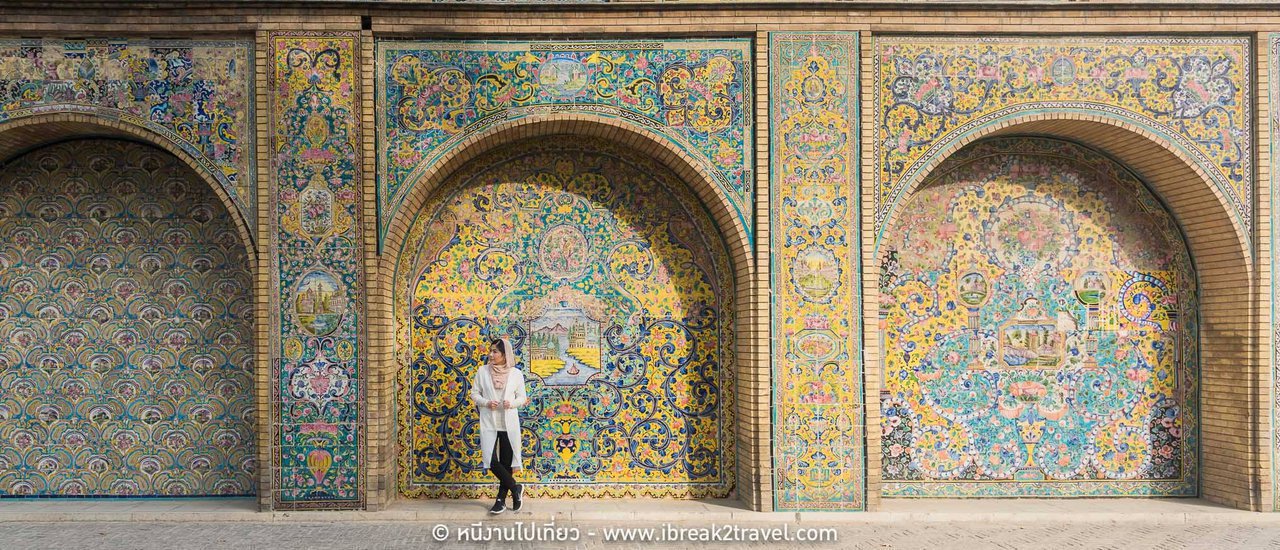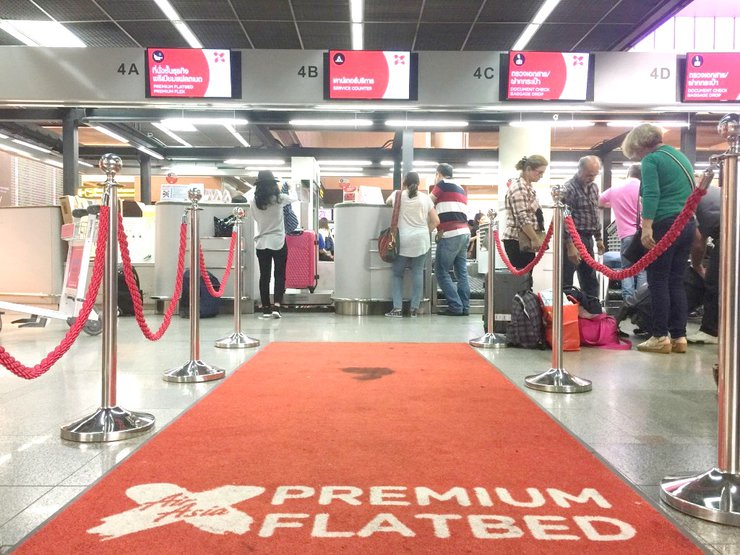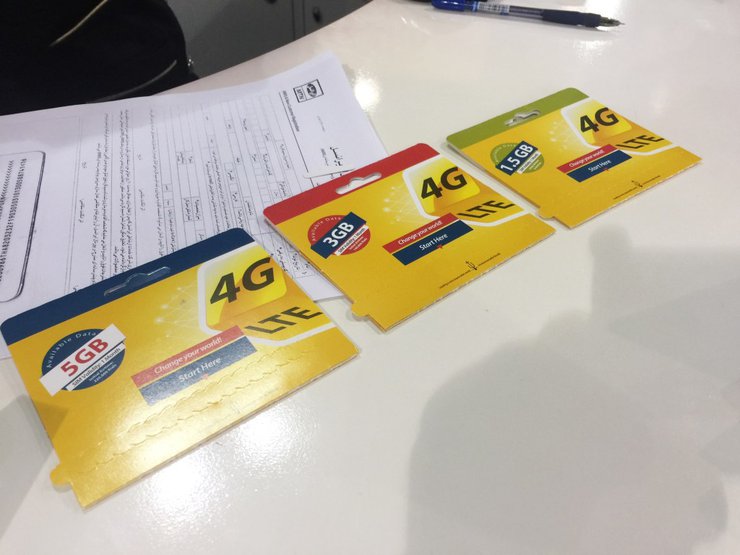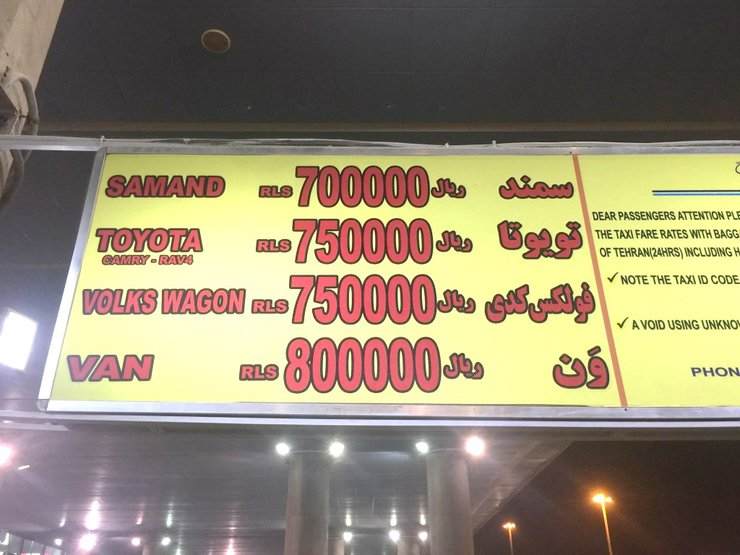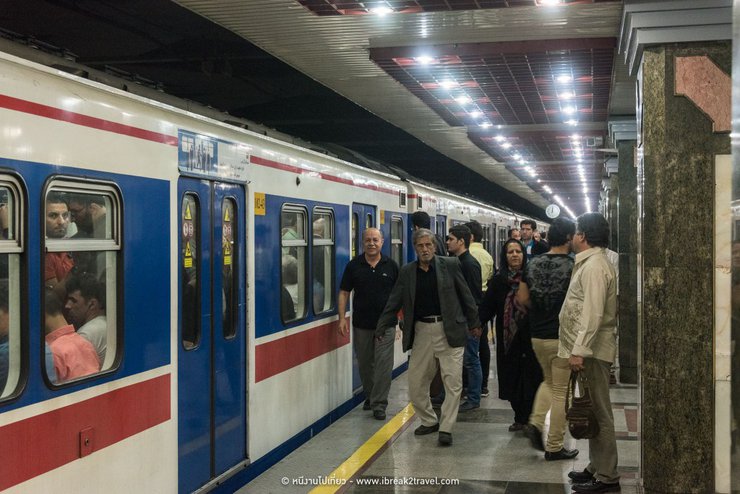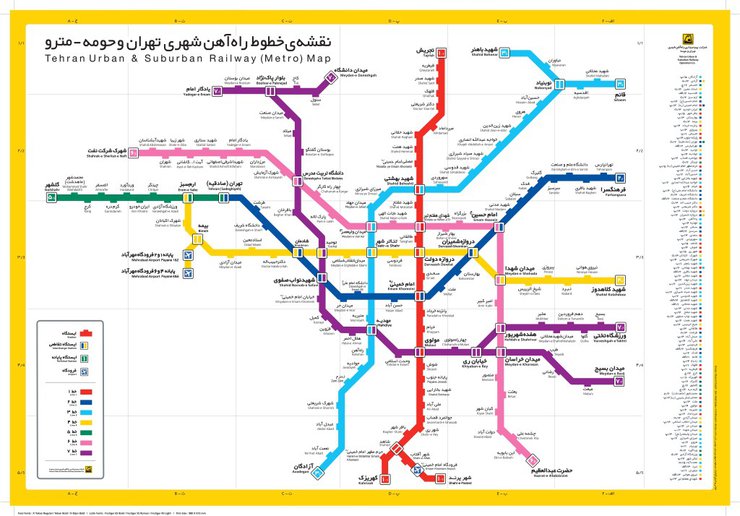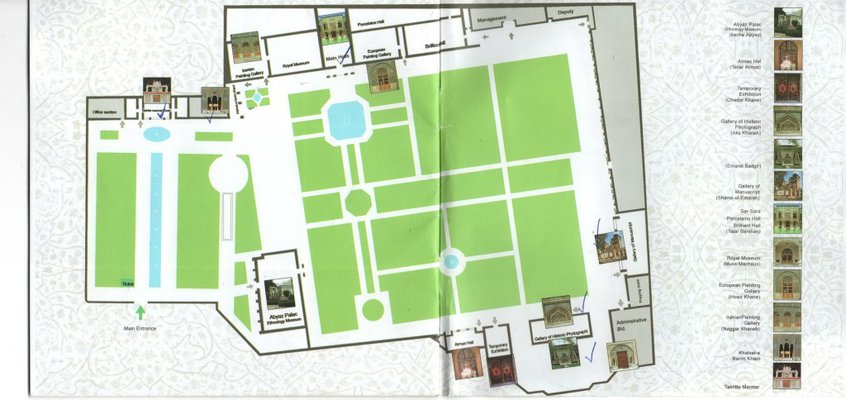Embark on an extraordinary journey to Tehran, where you'll uncover the grandeur of ancient Persian civilization.
Image URL: http://i0.wp.com/ibreak2travel.com/wp-content/uploads/2016/11/25591025-16-44-40-_KNP4712.jpg?resize=1140%2C700
How do your friends remember Iran?
In my childhood memories, this country has always been present. The stories I heard were not pleasant, as they were about the war between the two Middle Eastern countries, Iraq and Iran.
At that time, I didn't know who was who, why they were fighting, who was right or wrong. Whenever I watched the news on TV, I saw that these two countries were always fighting, from 1980 (when I was 2 years old) until 1988. Then, all of a sudden, they stopped fighting!
http://i2.wp.com/ibreak2travel.com/wp-content/uploads/2016/11/iran-MMAP-md.png?resize=810%2C573
Behold, Iran is surrounded by war-torn countries!
Following my initial exposure to news about Iran, my interest in the country deepened through film. This led me to explore the rich history of the Persian civilization, uncovering its past grandeur and subsequent decline.

This is another Persian perspective presented by Hollywood. 5555
Throughout my life, I have rarely considered visiting this country, as news about Iran is often portrayed negatively.
The barrage of negative rumors I heard from those around me forced me to reluctantly turn my back on Iran. Until... I saw this TV commercial.
Embark on a Journey of Self-Discovery in Iran with Us
"Travel broadens our horizons," this quote inspired us, a couple, to embark on a journey of exploration. We created a small page called "Escape Work, Travel" and a blog at www.ibreak2travel.com. Looking back, we were once just like you:
- I was a tourist with a demanding job.
- My partner was an office worker who longed to travel.
Despite our differences, we found common ground and reached a point where we wanted to create a page to invite fellow working individuals to join us on our adventures. If we can do it, anyone can!
Please support us by liking our page:
- Facebook: https://www.facebook.com/ibreak2travel/
- Website: http://ibreak2travel.com/
Remember, work-life balance is essential. Work hard, but don't forget to explore!
Iran begins here "Tehran"
Tehran: A Megacity in the Middle East
Tehran, the capital of Iran, is the largest city in the Middle East, with a population of approximately 14 million people. Beyond its political significance, Tehran serves as a major industrial hub, particularly in the oil and automotive sectors. Additionally, it is a prominent center for business and commercial aviation within the region.
Image of a woman standing on a rock overlooking a vast landscape.
Tehran at night is bustling and crowded.
Tehran: A City of Contrasts
Tehran, whose name translates to "warm slope" in Persian, is a city nestled amidst mountains, experiencing dramatic temperature fluctuations between day and night. Each season brings a unique character to the city, with scorching summers reaching 43°C and frigid winters dipping close to 0°C.
The best time for Thai people to visit Iran is during the autumn (around October-November) and spring (around April-May) when the weather is pleasantly cool, neither too cold nor too hot. From December to February, it is the winter season with snowfall.
Image URL: http://i1.wp.com/ibreak2travel.com/wp-content/uploads/2016/11/25591025-15-58-51-_KNP4700.jpg?resize=810%2C454
Azadi Tower: A Symbol of Iranian Freedom
Traveling to Tehran
Direct Flights from Thailand to Tehran
Currently, two airlines offer direct flights from Thailand to Tehran: Thai Air Asia X and Thai Airways. The flight duration is approximately 7 hours and 20 minutes, arriving at Tehran Imam Khomeini International Airport (IKIA). It's important to note that Tehran's local time is 3.5 hours behind Thailand's.

Currently, Thai citizens require a visa to travel to Iran. There are two ways to apply for a visa: through the Iranian embassy in Thailand or through an Iranian embassy in a third country.
Visa on Arrival in Iran
Before disembarking from the plane, let's learn a little about the customs of Muslim countries.
For women:
- All women in Iran must wear a headscarf. Women must cover their hair neatly from the moment they are on the plane.
- Women must wear modest clothing. They should have a coat that can cover them from the neck to the knees.
- Both men and women should not wear revealing clothing, such as tank tops, muscle shirts, shorts, or short skirts.
- It goes without saying that bikinis and swimsuits are allowed, but they must be covered and not visible to anyone.
In public:
- Avoid holding hands, hugging, or kissing.
- Be careful not to take pictures with the opposite sex, even if they ask to take a picture with you.
- Avoid shaking hands with the opposite sex, especially with Iranians, both intentionally and unintentionally.
Here are 7 points for now. It's not difficult, I don't think it's too much... (singing along)
For social media enthusiasts, you can purchase a SIM card directly at the airport. Irancell is recommended, as it was suggested by Iranians on the plane to have the best signal. Packages are available for both internet and calls: 5GB = 460,000 rials, 3GB = 310,000 rials, 1.5GB = 160,000 rials.

However, the Iranian government has blocked access to all social media platforms, including Facebook, Instagram, and YouTube. Messaging apps such as LINE, WhatsApp, and Telegram remain accessible.
If you plan to visit Iran, I recommend downloading a VPN app from Thailand before your trip. The apps I have found to be effective are Open Door (for iPhone) and Secure VPN. You can also download other VPN apps, as downloading them in Iran may be difficult.
http://i2.wp.com/ibreak2travel.com/wp-content/uploads/2016/11/IMG_1476.jpg?resize=810%2C1440
The Irancell counter is located in Hall B of the Arrivals section. You will need your original passport and fingerprints (they will take your fingerprints with blue ink). The forms are only in Farsi (the local language of Iran), but the staff can speak English to some extent.
We encountered an issue that wasted several hours of our time. Fortunately, we met a kind Iranian who helped us re-enter the information. However, you may not be as lucky as we were.
A photo of a woman standing on a rock formation overlooking a valley.
This woman named Parvane, an Iranian woman who coincidentally helped us with our Sim phone, willingly went to work late to solve the problem for us until it was successful. We love her very much.
Traveling from IKIA Airport to Tehran
Original Text:
การเดินทางจากสนามบิน IKIA เข้ากรุงเตหะราน
Traveling from IKIA Airport to Tehran.
From Tehran Imam Khomeini International Airport (IKIA) to Tehran City Center: Taxi Options
For a quick and convenient journey from IKIA to Tehran city center, taking a taxi is recommended. Look for the designated taxi area outside the airport terminal building, marked with the "TAXI" symbol. Alternatively, inquire with airport personnel for assistance. The trip typically takes around one hour.
Taxi Fares:
Taxis operate with fixed fares based on the vehicle type chosen. Here are the options available:
- SAMAND: 700,000 Rials
- TOYOTA: 750,000 Rials
- Volks Wagon: 750,000 Rials
- Van: 800,000 Rials
Note:
- Fares are subject to change.
- It is advisable to confirm the fare with the driver before starting the journey.
- Payment is typically made in cash.

Please disregard any discrepancies in the price. Use this price as a reference, but if you can find a lower price, please proceed immediately.
Image of a person standing on a rock formation overlooking a body of water.
The characteristics of our car are as follows:
Tehran's Transportation System
As the capital city, Tehran boasts a convenient transportation system, including the metro, buses, and taxis. Here's a breakdown of each option:
1. Subway
Affordable and Efficient Travel in Tehran: Exploring the City by Metro
Tehran boasts an extensive and affordable metro network, making it the ideal choice for exploring the city. With fares as low as 7,500 rials per trip, the metro allows you to reach numerous destinations conveniently and cost-effectively. While some locations may require a short walk from the station, the vast majority of Tehran's attractions are easily accessible via the metro system.

The Tehran Metro is modern.
Image of a woman standing on a rock overlooking a valley.
When the train stops, please pay attention to the English station name.

Sure, I can send you the map.
Opening Hours: 6:00 AM - 12:00 AM
Things to Know:
- No English announcements: The train only announces station names in Farsi. It's recommended to watch the station names as the train stops at each platform or count the stations. If you're unsure, ask a local Iranian by showing them the station name on a piece of paper.
- Women-only carriages: The first five carriages are reserved for women only. If you prefer not to be crowded with men, you can board these carriages.
- Rush hour crowds: During peak hours, the trains get extremely crowded, even more packed than a can of sardines.
- Colorful vendors: One interesting aspect of the Tehran Metro is the presence of vendors selling various goods on the trains. You can find everything from souvenirs and bags to socks, belts, and coloring books. It's a unique and entertaining experience.
2. Taxis
Taxis offer the most convenient, fastest, and most expensive option within the public transportation system. The starting fare is 100,000 rials (without a meter), so it is crucial to negotiate the price before entering the taxi. Ensure you clarify the currency being used (rials or tomans; 1,000 rials = 100 tomans). Taxi fares in Tehran are notoriously high. As with taxis worldwide, it is advisable to avoid them unless absolutely necessary.
3. Buses
Tehran's Public Transportation: A Local Perspective
Based on local insights, Tehran's public transportation offers affordable fares with consistent pricing across routes. However, English signage and driver communication are limited, posing challenges for non-Farsi speakers. Due to our reliance on alternative transportation during our trip, we refrain from providing detailed information on bus services at this time.
Exploring Tehran: Must-See Destinations
While we cannot offer specific recommendations on bus routes, we can highlight some of Tehran's must-see attractions:
- Golestan Palace: A UNESCO World Heritage Site showcasing stunning architecture and intricate tile work.
- National Museum of Iran: Housing a vast collection of artifacts spanning millennia, offering insights into Iran's rich history and culture.
- Grand Bazaar: A bustling marketplace with vibrant stalls offering traditional crafts, textiles, and spices.
- National Jewelry Museum: Home to the dazzling Crown Jewels of Iran, including the iconic Darya-i-Noor diamond.
- Milad Tower: Offering panoramic views of the city from its observation deck.
These are just a few of the many attractions Tehran has to offer. We encourage you to research and plan your itinerary based on your interests and preferences.
Tehran's Top Tourist Attractions: A Comprehensive Guide
Tehran, the bustling capital of Iran, offers a diverse range of tourist attractions, catering to various interests. From bustling bazaars and modern shopping malls to ancient mosques and palaces, the city has something for everyone. This guide highlights the must-see destinations in Tehran, ensuring an unforgettable travel experience.
1. Grand Bazaar: Immerse yourself in the vibrant atmosphere of the Grand Bazaar, one of the largest and oldest covered markets in the world. Explore the labyrinthine alleys lined with shops selling everything from spices and carpets to jewelry and handicrafts.
2. National Museum of Iran: Delve into Iran's rich history and cultural heritage at the National Museum of Iran. Housing an extensive collection of artifacts, including ancient pottery, sculptures, and manuscripts, the museum offers a fascinating glimpse into the country's past.
3. Golestan Palace: Step back in time at the opulent Golestan Palace, a UNESCO World Heritage Site. Admire the exquisite architecture, intricate tile work, and lush gardens, reflecting the grandeur of the Qajar dynasty.
4. Niavaran Palace Complex: Explore the Niavaran Palace Complex, a collection of museums and palaces showcasing the lives of the Pahlavi dynasty. Visit the White Palace, the Crown Jewels Museum, and the Ahmad Shahi Pavilion, each offering unique insights into Iran's recent history.
5. Tabiat Bridge: Take a stroll across the iconic Tabiat Bridge, a modern architectural marvel offering panoramic views of the city. Enjoy the vibrant atmosphere and the opportunity to capture stunning photographs.
6. Tehran Museum of Contemporary Art: Immerse yourself in the world of modern and contemporary art at the Tehran Museum of Contemporary Art. Housing works by renowned Iranian and international artists, the museum provides a platform for artistic expression and dialogue.
7. Darband: Escape the hustle and bustle of the city with a hike to Darband, a picturesque mountain village nestled in the Alborz Mountains. Enjoy the fresh air, stunning views, and traditional teahouses along the way.
8. Tochal Ski Resort: For winter sports enthusiasts, the Tochal Ski Resort offers a thrilling experience. Located on the slopes of Mount Tochal, the resort provides opportunities for skiing, snowboarding, and other winter activities.
9. Imamzadeh Saleh Mosque: Marvel at the intricate tile work and beautiful architecture of the Imamzadeh Saleh Mosque, a revered religious site in Tehran. Immerse yourself in the spiritual atmosphere and admire the stunning views from the courtyard.
10. Tehran International Tower: Ascend the Tehran International Tower, the tallest structure in Iran, for breathtaking panoramic views of the city. Enjoy a meal at the revolving restaurant or simply admire the cityscape from the observation deck.
This list provides a starting point for exploring Tehran's diverse attractions. With its rich history, vibrant culture, and stunning natural beauty, Tehran offers an unforgettable travel experience for visitors from all walks of life.
Golestan Palace (Persian: کاخ گلستان, Kākh-e Golestān)
Tehran's Historic Citadel: A Must-See on Your Trip
Visiting Tehran wouldn't be complete without exploring its historic Citadel. This ancient palace complex stands as a testament to the city's rich history, dating back to the 16th century under the Safavid dynasty.
The remaining structures, including the towering Citadel and the traditional Turkish bathhouse, offer a glimpse into Tehran's past. The Citadel, once used for surveillance against enemies, now serves as a reminder of the city's strategic importance.
Exploring this historical gem allows visitors to delve into the architectural and cultural heritage of Tehran, providing a deeper understanding of the city's evolution over centuries.
Image URL: http://i2.wp.com/ibreak2travel.com/wp-content/uploads/2016/11/25591018-19-30-27-_KNP0874.jpg?resize=810%2C541
During the 19th century, under the Qajar Dynasty (1779-1921), Persia experienced a period of prosperity in trade, foreign relations, and the arts. King Nasser Al-Din Shah, the penultimate king of the Qajar dynasty (1848-1896), was inspired by his travels to Europe and ordered the construction and decoration of palaces in the European Neoclassical style. This introduction of European advancements led to significant changes in the lifestyles of Iranian people.
The palace's interior is adorned with exquisite diamond-cut mirrors, while the exterior boasts colorful glazed tiles with unique Qajar-era patterns, showcasing the architectural brilliance of this era.
Image
The provided URL points to an image hosted on the website ibreak2travel.com. The image depicts a scenic landscape with a winding road leading through a lush green valley. The road is bordered by tall trees and vibrant wildflowers, creating a picturesque and inviting atmosphere. The image evokes a sense of tranquility and escape, inviting the viewer to explore the natural beauty of the surroundings.
Note: This translation focuses solely on the visual content of the image and does not include any information about the website or its purpose.
After the revolution led by Imam Khomeini, this palace fell into disrepair and was abandoned, like many other palaces. Later, when Iran began to open up to the world again, several palaces were completely restored.
UNESCO declared Golestan Palace a World Heritage Site in 2007. The palace's beauty has led to it being hailed as "A masterpiece of the Qajar era." Today, Golestan Palace is still used to officially receive dignitaries and foreign guests.
Visiting Golestan Palace can be expensive, especially if you want to see everything. The All Area ticket costs 940,000 rials (approximately $940 USD), which is a significant amount. It's important to note that some parts of the palace are still under renovation, and photography is not allowed in many areas. Therefore, it's worth considering whether the cost is justified before purchasing the All Area ticket.
Image of a woman standing in front of a large, ornate gate.
The Grand Palace boasts 10 distinct zones open to the public, offering a truly immersive experience.
I recommend checking with the ticket office staff about which zones are under maintenance and which zones are allowed for photography. I have also inquired and received the recommendations shown in the image below. The areas with checkmarks are recommended for visiting and photography (except for the Main Hall).

The checked items indicate locations where photography is permitted and recommended for visitation.
The Marble Throne (Takht-e Marmar)
"Marble Throne" This large throne is a testament to wealth, carved from renowned and precious creamy yellow marble from the city of "Yazd", painted, and decorated with mirrors according to the wishes of "Fath Ali Shah" of the "Qajar" dynasty in 180 AD.

Marble throne

Image of a scenic landscape
The provided URL points to an image hosted on the website ibreak2travel.com. The image depicts a breathtaking landscape, likely captured during a travel adventure.
Note: I am unable to access and process the image directly due to limitations in my current capabilities. However, based on the URL and context, I can provide a general description of the image content.
This alabaster throne is considered the oldest building in the palace, situated on a large terrace. Historically, this location served as the coronation site for Qajar dynasty kings and for significant royal ceremonies.
Karim Khani Nook (Khalvat e Karim Khani)
In the Qajar dynasty, European paintings were displayed in the pavilion known as the "House of the Pool." This structure served as a summer retreat, featuring a unique cooling system that drew water from an underground stream into a small pool within the chamber. This system, which was also employed in several other rooms during the summer months, relied on the evaporative effect of water to mitigate the harsh heat. However, due to the detrimental effects of humidity, this ingenious cooling mechanism is no longer in operation.

Image URL: http://i2.wp.com/ibreak2travel.com/wp-content/uploads/2016/11/25591018-17-14-48-_KNP0676.jpg?resize=810%2C541
Dating back to 1759, the interior design resembles a marble throne but on a smaller scale and with less ornamentation. This building features a marble carving of King Nasser Al-Din Shah. A small fountain once stood in the center of this balcony, which was a favorite spot for the king.
Main Hall – Brilliant Hall (Talar e Aineh)
The hall is adorned with exquisite Iranian glasswork, featuring diamond-like cut glass and ornate chandeliers. It houses a collection of antique artifacts from various countries, including China, France, Japan, and Russia, each piece meticulously crafted and showcasing intricate beauty. The hall also features oil paintings by Sani OL Molk (Yagh Khan).
This zone houses a wax replica of "Shah", which was once used as a royal audience chamber to welcome distinguished guests. Photography is prohibited in this area, but it is highly recommended for its exquisite beauty.
http://i1.wp.com/ibreak2travel.com/wp-content/uploads/2016/11/25591018-17-50-02-_KNP0702.jpg?resize=810%2C541

Porcelain Hall
This zone, an extension of the Main Hall, showcases exquisite ceramic pieces gifted by European monarchs, including those from the Qajar dynasty. The intricate designs and embellishments, including jewels and jewelry from Queen Victoria, are truly remarkable. Photography is prohibited in this zone.

Gallery of Manuscripts
The most prominent building, a stunning blend of Persian and European architecture, graces the eastern wing of the palace. This architectural marvel, conceived by Nasser Al-Din Shah before his first European tour, reflects his admiration for European buildings. Its towering structure offers breathtaking views of the city's picturesque landscape.
Image of a scenic landscape
The provided URL points to an image hosted on the website ibreak2travel.com. The image depicts a breathtaking landscape, showcasing a vast expanse of rolling hills and mountains under a clear blue sky. The foreground features lush green vegetation, while the background reveals snow-capped peaks in the distance. The overall composition evokes a sense of tranquility and awe, inviting the viewer to immerse themselves in the beauty of nature.
The intricate tile patterns adorning the walls of the corridor are breathtakingly magnificent.
Image of a woman standing on a rock overlooking a valley.
The Construction of Shams-ol-Emareh
The construction of Shams-ol-Emareh commenced in 1865 and was completed two years later. The edifice comprises two identical structures, each adorned with intricate tilework and opulent windows.
Is there anything else I can help you with?
Image URL: http://i2.wp.com/ibreak2travel.com/wp-content/uploads/2016/11/25591018-19-16-23-_KNP6468.jpg?resize=810%2C541
An Iranian family with a Chinese woman.
Image
The provided URL points to an image hosted on the website ibreak2travel.com. The image depicts a scenic landscape with a winding road leading towards a mountain range in the distance. The foreground features lush greenery and a clear blue sky.
Note: This translation focuses solely on the image content and does not include any information about the website or its purpose.
Getting to Golestan Palace:
- Take the red line of the Metro to Panzdah Khordad or Imam Khomeini station.
- From either station, it's a short walk to the palace. (Panzdah Khordad is closer to the Grand Bazaar.)
GPS Coordinates:
- 35.6811383, 51.4175964
Opening Hours:
- 9:00 AM - 6:00 PM (Ticket sales close at 3:00 PM)
Website:
- http://www.golestanpalace.ir/
Tehran's Grand Bazaar
This is the ultimate definition of a market, with a vibrant array of goods, including food, fashion, jewelry, carpets, sweets, souvenirs, and more, spanning an incredible 10 kilometers! Yes, you read that correctly: 10 kilometers. Located in ARG Square, opposite the exit gate of Golestan Palace, this massive market is a labyrinth of alleys and shops covering a vast area.
Image of a woman standing on a cliff overlooking the ocean.
http://i1.wp.com/ibreak2travel.com/wp-content/uploads/2016/11/25591018-20-18-12-_KNP0897.jpg?resize=810%2C541
There is no text to translate. Please provide the text you want me to translate.
http://i1.wp.com/ibreak2travel.com/wp-content/uploads/2016/11/25591018-20-40-14-_KNP0926.jpg?resize=810%2C541
The seller of juiced fruits and vegetables, wow... Eating it makes you handsome. I'll try it later.
Image
The provided URL points to an image hosted on the website ibreak2travel.com. The image depicts a scenic landscape with rolling hills, a winding road, and a clear blue sky. The specific details of the image cannot be accurately translated without access to the image itself.
However, based on the URL and the website it is hosted on, it is likely that the image is related to travel and exploration. The website ibreak2travel.com focuses on travel experiences and destinations around the world.
Therefore, the image could potentially be used to illustrate a travel blog post, an article about a specific location, or a social media post promoting travel.
Without access to the image itself, a more precise translation is not possible.
Visiting Iran is a must for nut lovers. The country offers a wide variety of delicious and affordable nuts.
The bustling atmosphere of the market is palpable. Goods are meticulously organized into designated zones, ensuring a streamlined shopping experience. The vendors' enthusiastic cries and captivating product presentations are a delight to behold, eliciting smiles and a sense of joy among the browsing customers.
We were surprised to discover that Iranians are passionate about shopping. Throughout our market explorations, we were greeted with smiles, waves, and frequent requests for photographs.
The image depicts a scenic landscape with rolling hills, lush vegetation, and a winding river. The sky is a vibrant blue, with fluffy white clouds scattered across it. The overall impression is one of tranquility and natural beauty.
http://i0.wp.com/ibreak2travel.com/wp-content/uploads/2016/11/25591018-20-42-04-_KNP0943.jpg?resize=810%2C541
The soil here seems perfect for growing peanuts. Every vendor's peanuts are delicious. I'm telling you!
Tower of Freedom
Azadi Tower: A Symbol of Freedom in Iran
The Azadi Tower, a prominent landmark in Tehran, Iran, stands as a monument to freedom and a testament to the country's rich history. Situated in Azadi Square, the tower was constructed in 1971 to commemorate the 2,500th anniversary of the Persian Empire.
The tower's distinctive Y-shaped design, resembling an inverted Y, incorporates elements of various Persian architectural styles, reflecting the nation's long and vibrant cultural heritage. Renowned Iranian architect Hossein Amanat conceived this architectural masterpiece.
http://i0.wp.com/ibreak2travel.com/wp-content/uploads/2016/11/25591025-16-44-40-_KNP4712.jpg?resize=810%2C541
Image of a woman standing on a cliff overlooking the ocean.
The surrounding area is decorated as a public park, with a lawn, trees, and beautiful flower gardens. In the center, there is a fountain plaza. If you come in the evening around 6:00 pm or 7:00 pm, the fountain will be turned on and colorful lights will be projected onto the monument, which is very beautiful.

Maintenance. Oh no, the little girl is sad.
Unfortunately, when I visited, the government was renovating the area under the monument, so I couldn't take any pictures of the lights at night. I'm sure I'll have to go back and try again next time.

Shah-Abdol-Azim Shrine
The Shah-Abdol-Azim Shrine is a holy site located in the city of Rey, Iran. It is the burial place of Shah-Abdol-Azim, a revered figure in Shia Islam. The shrine is a popular pilgrimage destination and is known for its beautiful architecture and intricate tile work.
I stumbled upon this mosque while searching for images of Tehran on Google. I was immediately struck by its beauty and wondered where it was located. After some research, I discovered that it is a historic and significant mosque in Tehran. I couldn't wait to visit it, so I made plans to do so right away. Let's take a closer look at the details.
The Shah-Abdol-Azim Mosque, also known as the Shah-Abdol-Azim Shrine, is a historic and significant mosque in Tehran, located in the city of Rey. It houses the tomb of Abdul Azim, the fifth descendant of Hasan ibn Ali, a prominent religious leader in Islam.
Astonishingly, the remains of Abdul Azim were interred here in the 9th century. This implies that the mosque itself dates back to the 9th century!

The Majesty of the Mosque: A Sensory Experience
Upon witnessing the mosque in person, its beauty surpassed all expectations. The intricate architecture was a sight to behold, both inside and out. The main dome gleamed with a golden hue, while the "iwan," or arched entrance, was adorned with exquisite stained glass. The intricate details were breathtaking. Across the courtyard, a majestic clock tower stood tall, its elegance rivaling that of the mosque itself.
Unfortunately, photography was not permitted inside the mosque (presumably only during prayer times). I had the opportunity to walk in and admire the interior, which was beautifully decorated with stained glass and chandeliers. The walls were made of marble, intricately carved with religious inscriptions. The interior design was as stunning as the Golestan Palace.

The clock tower is also very beautiful.
Image
The provided URL points to an image hosted on the website ibreak2travel.com. The image depicts a scenic landscape with rolling hills, a winding road, and a clear blue sky. The specific details of the image cannot be accurately translated without access to the image itself.
However, based on the URL and the website it is hosted on, it is likely that the image is related to travel and exploration. The image may be used to illustrate a blog post or article about a specific destination or travel experience.
The evening sun shines through the archway.
Visitors are required to dress modestly. Please wash your hands, feet, and mouth before entering the mosque. Women are required to wear a chador, covering their heads and bodies, as a sign of respect for the holy site.
http://i0.wp.com/ibreak2travel.com/wp-content/uploads/2016/11/25591025-19-33-03-_KNP4770.jpg?resize=810%2C541
Women are required to wear a Chador. If you do not have one, the mosque can provide you with one.
Near the mosque, there is a large market called Shah-Abdol-Azim Bazaar, where people can shop. After visiting the mosque, don't forget to take a walk in the market. Oh, I recommend going to the mosque first and then going shopping, otherwise you will be so busy shopping that you will forget the time. 555
Image
The provided URL points to an image hosted on the website ibreak2travel.com. The image depicts a scenic landscape with a winding road leading through rolling hills and lush greenery. The sky is a vibrant blue with scattered clouds, and the overall atmosphere is one of tranquility and natural beauty.
Note: As a language model, I cannot directly access and process images. Therefore, my translation is based on the information available in the URL and the website where the image is hosted.
Pre-Bazaar atmosphere
http://i0.wp.com/ibreak2travel.com/wp-content/uploads/2016/11/25591025-19-11-28-_KNP4743.jpg?resize=810%2C541
As always, there were delicious snacks and nuts available for purchase.
Image: A woman in a red dress standing in front of a waterfall.
I'm not sure if I should call it an éclair or a choux pastry, but it's huge!

The atmosphere inside the market
http://i2.wp.com/ibreak2travel.com/wp-content/uploads/2016/11/25591025-19-20-47-_KNP4757.jpg?resize=810%2C541
Iranian-style cookies and biscuits, topped with nuts and fragrant herbs.
Getting to Shah-Abdol-Azim Shrine: Take the red line subway to Shehr-e-Ray station and then take a taxi for another 10-15 minutes. The taxi fare is approximately 20 baht per person.
GPS coordinates: 35.5860083,51.4332595
Tohid Tunnel
To answer the question of how developed Tehran is, and whether it is a backward country, I believe that seeing the Tohid Tunnel with your own eyes will answer all these questions clearly. The Tohid Tunnel is a 3 km long road tunnel, the third longest in the Middle East. Believe it or not, this tunnel was completed in just 30 months! (Let's look at some tunnels in our country, how many years have they been built?) This is an indicator of the advanced engineering technology of the Iranian people and helps to confirm that Iran is a country that is as developed as any other.
From this vantage point, on a clear day, one can clearly see the Milad Tower and the snow-capped Alborz Mountains in the background. Additionally, after observing the traffic conditions around this tunnel for an extended period, I have concluded that traffic congestion in Iran is likely among the worst in the world.
The image depicts a scenic landscape with rolling hills, lush vegetation, and a winding river flowing through the center. The sky is a vibrant blue, with fluffy white clouds scattered across it. The overall impression is one of tranquility and natural beauty.
Tohid Tunnel shines brightly amidst the city lights.
Image of a woman standing on a cliff overlooking the ocean.
Tohid Tunnel bathed in morning light is equally stunning.
Moghadam Museum: A World-Renowned Architectural Gem
The Moghadam Museum, housed within a magnificent mansion, stands as a testament to architectural excellence and cultural heritage.
The Moghadam Mansion is the most valuable mansion in the world, according to my friend, Yai. I thought she was exaggerating, but when I saw it in person, I was amazed by its beauty and intricate details. The mansion is built in the ancient Persian style and is truly a work of art.
As noted by American art historian Professor Pope in his article published in the Survey of Iranian Arts in Sepid-o-Siah magazine, this house is a testament to unique and historically significant architecture.
Image URL: http://i2.wp.com/ibreak2travel.com/wp-content/uploads/2016/11/25591026-15-33-56-_KNP5010.jpg?resize=810%2C541
Upon closer inspection, it becomes evident that numerous sections are currently undergoing renovations.
Image of a woman sitting on a bench in front of a body of water.
The provided text is a URL to an image hosted on the website ibreak2travel.com. The image depicts a scenic landscape with mountains and a lake.
Note: I am unable to translate the image itself, as I am a language model and not an image processing tool.
This house was once owned by Mohsen Moqadam, the youngest son of Ehtesab-o-Al-Molk, the mayor of Iran during the Naser-aldin era. Mohsen loved painting since childhood. Later, he became the first archaeologist to work with experts at various historical sites. He also founded the College of Fine Arts and taught at Tehran University.
Currently a museum, Moghadam is one of the luxurious houses representing the Qajar era. It houses a significant collection of Iranian art and is managed by Tehran University. Restoration began and it was opened to the public in August 2009.
Unfortunately, the mansion is currently undergoing major renovations, preventing us from exploring its interior beauty. However, I have included some sample images of the interior for your viewing pleasure.
http://i0.wp.com/ibreak2travel.com/wp-content/uploads/2016/11/25591026-15-58-09-_KNP5086.jpg?resize=810%2C545
Reflecting on its heyday, it must have been a magnificent sight.
http://i2.wp.com/ibreak2travel.com/wp-content/uploads/2016/11/25591026-16-04-53-_KNP5101.jpg?resize=810%2C541
This section is nearing completion.
http://i1.wp.com/ibreak2travel.com/wp-content/uploads/2016/11/25591026-15-40-36-_KNP5035.jpg?resize=810%2C641
Observe the exquisite craftsmanship of the stucco work. It is truly beautiful.
A photograph of a woman standing in front of a waterfall.
The garden is very lush, but unfortunately it hasn't been pruned much.
Directions: Take the subway to Baharentra Station and walk for 10 minutes.
Entrance Fee: 100,000 rials (normally 200,000 rials, currently discounted due to renovations).
Address: Tehran Province, Tehran, Imam Khomeini, Iran.
Opening Hours: 9:00 AM - 4:00 PM.
Recommended accommodation and restaurants in Tehran Moghadam Museum: A World-Renowned Architectural Gem
Having explored numerous locations in Tehran, it would be remiss of us not to recommend accommodation and dining options to our readers. Given that the majority of information on Iranian lodging and restaurants is in Farsi, and many websites are difficult to access, we will provide recommendations based on our personal experiences.
Persian Hostel
Private room (double bed, shared bathroom, with breakfast) costs 45 USD. Dorm beds start at 10 USD.
This newly opened accommodation, managed by young people, is located near the Shahid Mofatteh subway station (only a 3-minute walk away). If you are traveling from the airport, it is recommended to provide the hotel address and phone number to the driver and let them guide you. Farsi is a complex language.
http://i0.wp.com/ibreak2travel.com/wp-content/uploads/2016/11/25591018-13-49-42-_KNP0555.jpg?resize=810%2C1214
The Persian Hostel is located on the third floor of the Deed Gallery. If you're arriving with a large suitcase, now is the time to get some exercise. Lift your suitcase up to the third floor and you'll find a small hostel that is simply divided into dorm and private zones. There are two shared bathrooms, a kitchen, a refrigerator, and a sink.
http://i1.wp.com/ibreak2travel.com/wp-content/uploads/2016/11/25591018-13-56-16-_KNP0558.jpg?resize=810%2C541
Bunk bed for dorm-style accommodation
http://i1.wp.com/ibreak2travel.com/wp-content/uploads/2016/11/25591018-13-55-49-_KNP0557.jpg?resize=810%2C541
Bunk bed for dorm-style accommodation with storage lockers.
Image of a woman standing on a rock overlooking a valley.
Private room for 2 people. The room is spacious (apologies for the clutter).
Image of a woman standing on a rock overlooking a body of water.
The bathroom is clean and spacious.
The ground floor houses a stylish cafe and gallery. The coffee is delicious, and there's a small garden with coffee tables where you can sit and soak up the morning sun.
Breakfast at the Hotel
The hotel breakfast consisted of pound cake and Iranian bread (thin sheets, almost like paper), served with cream cheese, fruit jam, carrot jam, and fragrant herbal tea with a slightly fruity flavor.
Image of a woman sitting on a bench in front of a body of water.
There is a spacious courtyard with tables for relaxing.
The coffee tastes good, but it's a bit expensive.
Image of a woman standing on a beach with her arms outstretched, looking out at the ocean.
The hostel breakfast was delicious. I especially enjoyed the fruit tea and the carrot jam.
Review Scores from Work Escape Trip
- Location 4/5 Close to the subway, located in the city center, convenient transportation, but the room is on the 3rd floor and there is no elevator!!!
- Room 3.5/5 The room is clean, there are many power outlets, there is a sofa in the room, but there are no towels, you have to pay for them yourself
- Service 3/5 It depends on which manager you meet, but most of them are helpful
- Breakfast 3.2/5 The bread is good, the jam is delicious, the tea is very good, but it's not enough to fill you up!!
**Overall score: 3.4/5**
Shiva Traditional Restaurant
This shop is located on Valiasr Street (خیابانولیعصر), which is considered the "longest street in the Middle East." The street is beautiful, with a flowing stream and rows of trees, making it one of the most upscale streets in Tehran. It also boasts several modern shopping centers and numerous brand-name stores.
Besides brand-name stores and shopping malls, this street is also home to several famous hotels and restaurants, including Shiva Traditional Restaurant. We both stumbled upon this restaurant by chance. We were taken there by a dishonest taxi driver who tried to overcharge us. So we got out of the car (paying only the correct fare) and started looking for a restaurant on our own. That's how we found this place.
Image of a woman standing on a rock overlooking a body of water.
At first, we didn't realize this restaurant was famous (haha). The sign outside wasn't particularly eye-catching, and there was just a young man standing downstairs calling out to customers. We walked up the red-carpeted staircase to the second floor and found a classically decorated restaurant that didn't seem particularly remarkable. At that time, there were only about two tables occupied with customers.
http://i1.wp.com/ibreak2travel.com/wp-content/uploads/2016/11/25591026-00-07-25-_KNP4907.jpg?resize=810%2C541
http://i2.wp.com/ibreak2travel.com/wp-content/uploads/2016/11/25591026-00-06-27-_KNP4905.jpg?resize=810%2C541
After reviewing the menu (and prices), we ordered two dishes: mutton biryani and chicken biryani. While waiting for the restaurant to prepare our salad and yogurt with raisins, we found the salad and yogurt to be much more interesting than we expected. I had no doubts about the freshness of the salad vegetables, as vegetables here are inexpensive, fresh, and delicious. The restaurant's signature salad dressing made it even more enjoyable.
http://i2.wp.com/ibreak2travel.com/wp-content/uploads/2016/11/25591025-23-30-45-_KNP4886.jpg?resize=810%2C541
Fresh salad with delicious dressing.
A photograph of a woman standing in front of a waterfall.
Yogurt cheese sprinkled with raisins, delicious and very enjoyable. I like it.
Moments later, the waiter served the main course. Just the sight of the perfectly cooked rice and the fragrant aroma of the lamb and chicken made my mouth water. I must confess that this was our last meal in Iran, and before we stumbled upon this restaurant, we had already sampled several Persian dishes.
Image of a woman standing on a rock overlooking a valley.
The goat biryani, featuring perfectly stewed goat meat, is marinated with spices and completely free of any gamey odor.
http://i2.wp.com/ibreak2travel.com/wp-content/uploads/2016/11/25591025-23-38-13-_KNP4900.jpg?resize=810%2C541
The chicken biryani that Yai Muai admired so much.
Unlike other traditional restaurants, Shiva uses a high-pressure braising method instead of grilling. The braised goat and chicken are so tender that they can be easily separated with a spoon.
The Flavorful Delights of Chicken and Goat Biryani
The chicken biryani boasts a tender and flavorful chicken, perfectly complementing the fragrant rice infused with aromatic spices, nuts, and saffron-infused ghee. The goat biryani, on the other hand, features marinated goat meat that has been slow-cooked to perfection, effectively reducing any gamy odor. The resulting meat is incredibly tender and pairs beautifully with the flavorful rice, creating a truly delightful culinary experience.
http://i0.wp.com/ibreak2travel.com/wp-content/uploads/2016/11/25591025-23-39-28-_KNP4901.jpg?resize=810%2C541
Compare the size of the plate to the size of the girl. Believe it or not, she ate everything.
Image URL: http://i0.wp.com/ibreak2travel.com/wp-content/uploads/2016/11/25591025-23-39-57-_KNP4903.jpg?resize=810%2C541
May I have a word with you?
Here are the reviews from our escape-to-travel trip:
- Shop decoration 3.5/5 The shop decoration looks a bit old-fashioned, but the shop is clean.
- Service 4/5 I really like the uncle who is a waiter. He is attentive, honest and cute.
- Food taste 4.2/5 The taste of the food in this restaurant is mild, but it doesn't lean too much in any direction.
- Price 3.8/5 The price is a bit high, but it's worth the quality of the food.
Overall score 3.9/5
Tehran is the gateway to Persia, a former great civilization in the Middle East. This country still has many interesting things that we both want to take you to experience. Follow our journey in other cities soon.
"Travel broadens our horizons."
This simple yet profound statement inspired me and my partner to embark on a journey of exploration, leading to the creation of our Facebook page, "หนีงานไปเที่ยว" (Escape Work to Travel), and our blog, www.ibreak2travel.com. Through our travels, we have witnessed the transformative power of experiencing new cultures, encountering diverse perspectives, and forging meaningful connections. We believe that travel is not merely a leisure activity but a catalyst for personal growth, intellectual expansion, and a deeper understanding of the world around us.
Years ago, when we first met, "E-pring was a tourist who had to work a regular job, while Yai Muai Tidti was a regular worker who wanted to travel." We were so different, but when we started dating, our differences found a balance that led us to the point where we wanted to create a page to take our working friends on trips with us. If we can do it, anyone can do it like us.
Please support our store by liking our page and setting it to "See First" so you'll always be updated on our latest offerings.
หนีงานไปเที่ยว
Friday, October 4, 2024 3:03 PM

